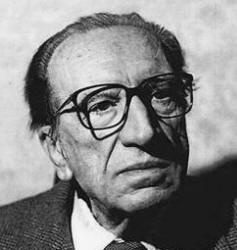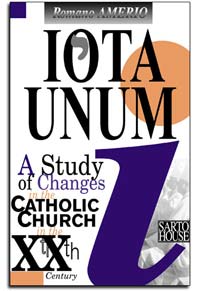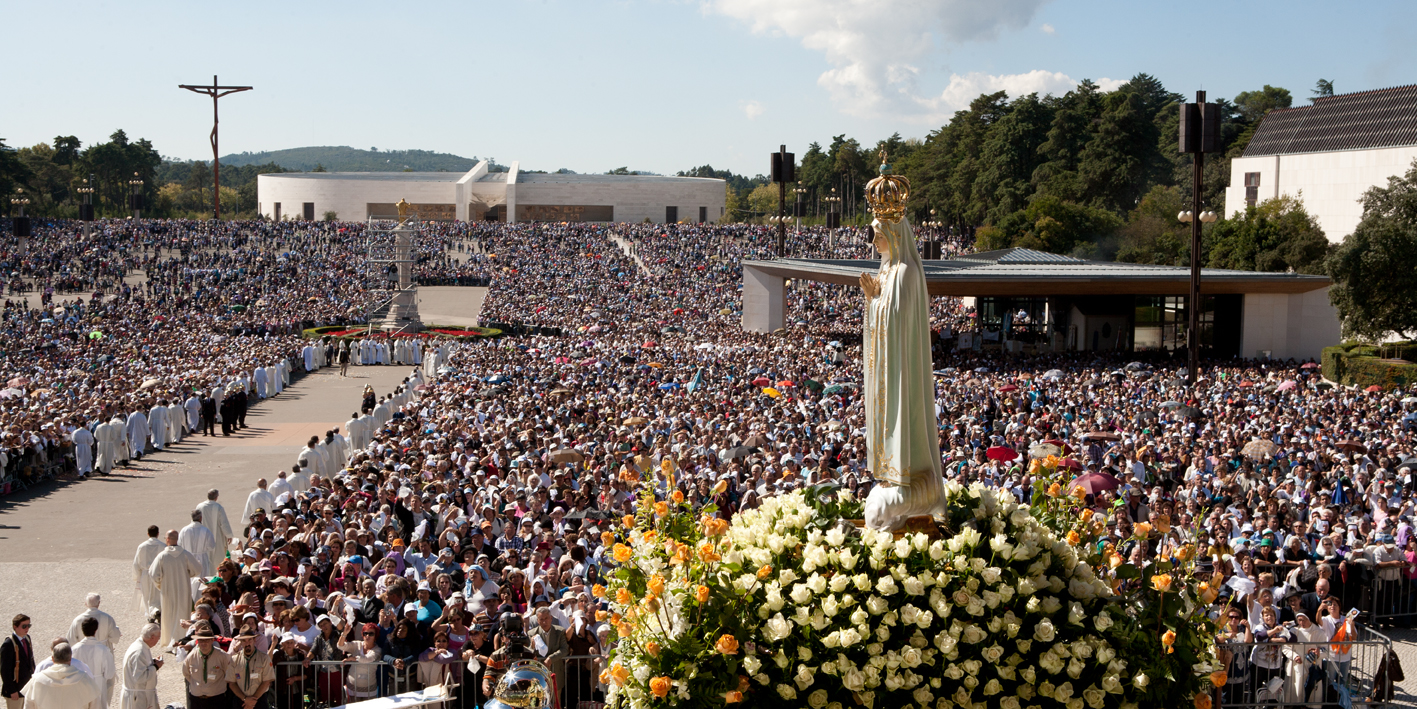


- Methodological and linguistic definitions.
- Denial of the crisis.
- The error of secondary Christianity.
- The crisis as failure to adapt.
- Adapting the Church's contradiction of the world.
- Further denial of the crisis.
- The Pope recognizes the loss of direction.
- Pseudo-positivity of the crisis. False philosophy of religion.
- Further admissions of a crisis.
- Positive interpretation of the crisis. False philosophy of religion.
- Further false philosophy of religion.
- The crises of the Church: Jerusalem (50 A.D.).
- The Nicene crisis (325 A.D.).
- The deviations of the Middle Ages.
- The crisis of the Lutheran secession. The breadth of the Christian ideal.
- Further breadth of the Christian ideal. Its limits.
- The denial of the Catholic principle in Lutheran doctrine.
- Luther's heresy, continued. The bull Exsurge Domine.
- The principle of independence and abuses in die Church.
- Why casuistry did not create a crisis in the Church.
- The revolution in France.
- The principle of independence. The Auctorem Fidei.
- The crisis of the Church during the French Revolution.
- The Syllabus of Pius IX.
- The spirit of the age. Alexander Manzoni.
- The modernist crisis. The second Syllabus.
- The pre-conciliar crisis and the third Syllabus.
- Humani Generis (1950).

CHAPTER III: The Preparation of The Council
- The Second Vatican Council. Its preparation.
- Paradoxical outcome of the Council.
- Paradoxical outcome of the Council, continued. The Roman Synod.
- Paradoxical outcome of the Council, continued. Veterum Sapientia.
- The aims of the First Vatican Council.
- The aims of Vatican II. Pastorality.
- Expectations concerning the Council.
- Cardinal Montini’s forecasts. His minimalism.
- Catastrophal predictions.
- The opening address. Antagonism with the world. Freedom of the Church.
- The opening speech. Ambiguities of text and meaning.
- The opening speech. A new attitude towards error.
- Rejection of the council preparations. The breaking of the council rules.
- The breaking of the Council’s legal framework, continued.
- Consequences of breaking the legal framework. Whether there was a conspiracy.
- Papal action at Vatican II. The Notapraevia.
- Further papal action at Vatican II. Interventions on mariological doctrine. On missions. On the moral law of marriage.
- Synthesis of the council in the closing speech of the fourth session. Comparison with St. Pius X. Church and world.
- Leaving the Council behind. The spirit of the Council.
- Leaving the Council behind. Ambiguous character of the conciliar texts.
- Novel hermeneutic of the Council. Semantic change. The word “dialogue.”
- Novel hermeneutic of the Council, continued. “Circiterisms.” Use of the conjunction “but.” Deepening understanding.
- Features of the post-conciliar period. The universality of the change.
- The post-conciliar period, continued. The New Man. Gaudium et Spes 30. Depth of the change.
- Impossibility of radical change in the Church.
- The impossibility of radical newness, continued.
- The denigration of the historical Church.
- Critique of the denigration of the Church.
- False view of the early Church.
- The opening address. Antagonism with the world. Freedom of the Church.
- The opening speech. Ambiguities of text and meaning.
- The opening speech. A new attitude towards error.
- Rejection of the council preparations. The breaking of the council rules.
- The breaking of the Council’s legal framework, continued.
- Consequences of breaking the legal framework. Whether there was a conspiracy.
- Papal action at Vatican II. The Notapraevia.
- Further papal action at Vatican II. Interventions on mariological doctrine. On missions. On the moral law of marriage.
- Synthesis of the council in the closing speech of the fourth session. Comparison with St. Pius X. Church and world.
- Leaving the Council behind. The spirit of the Council.
- Leaving the Council behind. Ambiguous character of the conciliar texts.
- Novel hermeneutic of the Council. Semantic change. The word “dialogue.”
- Novel hermeneutic of the Council, continued. “Circiterisms.” Use of the conjunction “but.” Deepening understanding.
- Features of the post-conciliar period. The universality of the change.
- The post-conciliar period, continued. The New Man. Gaudium et Spes 30. Depth of the change.
- Impossibility of radical change in the Church.
- The impossibility of radical newness, continued.
- The denigration of the historical Church.
- Critique of the denigration of the Church.
- False view of the early Church.
- Sanctity of the Church. An apologetical principle.
- The catholicity of the Church. Objection. The Church as a principle of division. Paul VI.
- The unity of the post-conciliar Church.
- The Church disunited in the hierarchy.
- The Church disunited over Humanae Vitae.
- The Church disunited concerning the encyclical, continued.
- The Dutch schism.
- The renunciation of authority. A confidence of Paul VI.
- An historic parallel. Paul VI and Pius DC
- Government and authority.
- The renunciation of authority, continued. The affair of the French catechism.
- Character of Paul VI. Self-portrait. Cardinal Gut.
- Yes and no in the post-conciliar Church.
- The renunciation of authority, continued. The reform of the Holy Office.
- Critique of the reform of the Holy Office.
- Change in the Roman Curia. Lack of precision.
- Change in the Roman Curia, continued. Cultural inadequacies.
- The Church’s renunciation in its relations with states.
- The revision of the concordat, continued.
- The Church of Paul VI. His speeches of September 1974.
- Paul VI’s unrealistic moments.
- The defection of priests.
- The canonical legitimation of priestly defections.
- Attempts to reform the Catholic priesthood.
- Critique of the critique of the Catholic priesthood. Don Mazzolari.
- Universal priesthood and ordained priesthood.
- Critique of the saying “a priest is a man like other men."
- Theological setting of the argument.
- Pyrrhonism in the Church. Cardinals Léger, Heenan, Alfrink and Suenens.
- The discounting of reason. Sullivan. Innovators’ rejection of certainty.
- The discounting of reason, continued. The Padua theologians. The Ariccia theologians. Manchesson.
FROM:http://www.sspxasia.com/Documents/books/Iota_Unum/chp_01.htm
Iota unum: étude des variations de l'Église catholique au XXe siècle
Contents
| 7 | |
| 9 | |
| 10 | |
| 11 | |
| 12 | |
| 13 | |
| 15 | |
| 16 | |
| 340 | |
| 404 | |
| 406 | |
| 407 | |
| 409 | |
| 410 | |
Civilisation de la nature et civilisation de la personne Civilisation du travail | 412 |
| 413 | |
| 17 | |
| 18 | |
| 21 | |
| 22 | |
| 23 | |
| 25 | |
| 27 | |
| 28 | |
| 29 | |
| 46 | |
| 89 | |
| 92 | |
| 96 | |
| 103 | |
| 110 | |
| 124 | |
| 130 | |
| 143 | |
| 161 | |
| 188 | |
| 194 | |
| 200 | |
| 207 | |
| 212 | |
| 213 | |
| 214 | |
| 224 | |
| 248 | |
| 260 | |
| 274 | |
| 276 | |
| 278 | |
| 280 | |
| 281 | |
| 283 | |
| 284 | |
| 287 | |
| 289 | |
| 291 | |
| 293 | |
| 296 | |
| 298 | |
| 300 | |
| 301 | |
| 303 | |
| 307 | |
| 308 | |
| 309 | |
| 310 | |
| 311 | |
| 314 | |
| 414 | |
Critique du christianisme secondaire Erreur théolo gique Erreur eudémonologique | 416 |
| 418 | |
| 419 | |
Le mythe du Grand Inquisiteur | 420 |
| 422 | |
| 423 | |
Examen du système démocratique La souveraineté populaire La compétence | 425 |
| 426 | |
Examen de la démocratie Une majorité dynamique Les partis | 427 |
| 428 | |
| 429 | |
| 430 | |
| 432 | |
Les Synodes et le SaintSiège | 434 |
| 435 | |
| 474 | |
| 478 | |
| 479 | |
| 480 | |
| 482 | |
| 483 | |
| 484 | |
| 485 | |
| 486 | |
| 487 | |
| 488 | |
| 490 | |
Sacerdoce et synaxe eucharistique | 492 |
| 494 | |
| 495 | |
| 497 | |
| 500 | |
| 501 | |
Les mérites du latin dans lEglise Son universalité | 503 |
| 505 | |
| 506 | |
| 508 | |
| 510 | |
Déconfiture générale du latin | 511 |
| 514 | |
| 575 | |
Discrédit du dogme et indifférentisme Les Etudes | 581 |
| 588 | |
| 594 | |
Obscurcissement de leschatologie Lœcuméné huma | 603 |
| 609 | |
| 621 | |
| 633 | |
| 645 | |
| http://books.google.com/books?id=f-LDK06724MC&dq=Emmanuelle+Du+Chalard&ie=ISO-8859-1&source=gbs_gdata |

 inundado por um mistério de luz que é Deus e N´Ele vi e ouvi -A ponta da lança como chama que se desprende, toca o eixo da terra, – Ela estremece: montanhas, cidades, vilas e aldeias com os seus moradores são sepultados. - O mar, os rios e as nuvens saem dos seus limites, transbordam, inundam e arrastam consigo num redemoinho, moradias e gente em número que não se pode contar , é a purificação do mundo pelo pecado em que se mergulha. - O ódio, a ambição provocam a guerra destruidora! - Depois senti no palpitar acelerado do coração e no meu espírito o eco duma voz suave que dizia: – No tempo, uma só Fé, um só Batismo, uma só Igreja, Santa, Católica, Apostólica: - Na eternidade, o Céu!
inundado por um mistério de luz que é Deus e N´Ele vi e ouvi -A ponta da lança como chama que se desprende, toca o eixo da terra, – Ela estremece: montanhas, cidades, vilas e aldeias com os seus moradores são sepultados. - O mar, os rios e as nuvens saem dos seus limites, transbordam, inundam e arrastam consigo num redemoinho, moradias e gente em número que não se pode contar , é a purificação do mundo pelo pecado em que se mergulha. - O ódio, a ambição provocam a guerra destruidora! - Depois senti no palpitar acelerado do coração e no meu espírito o eco duma voz suave que dizia: – No tempo, uma só Fé, um só Batismo, uma só Igreja, Santa, Católica, Apostólica: - Na eternidade, o Céu!